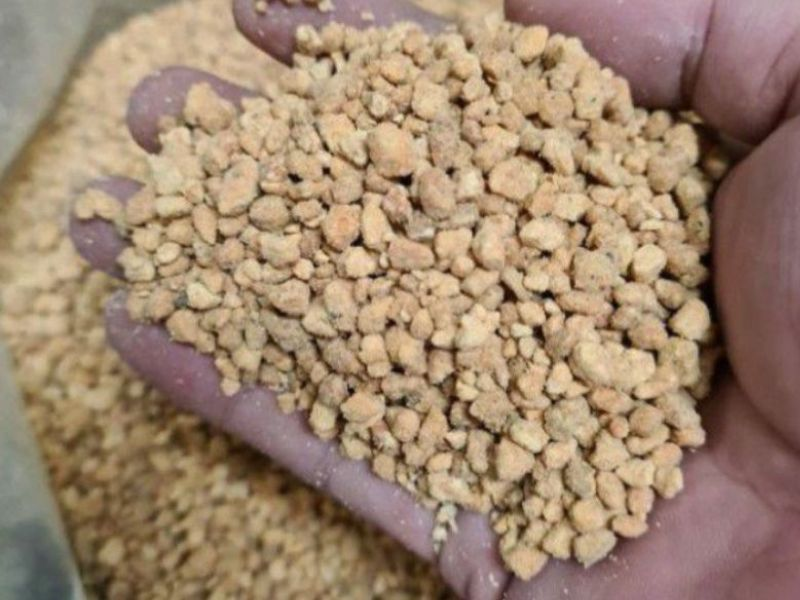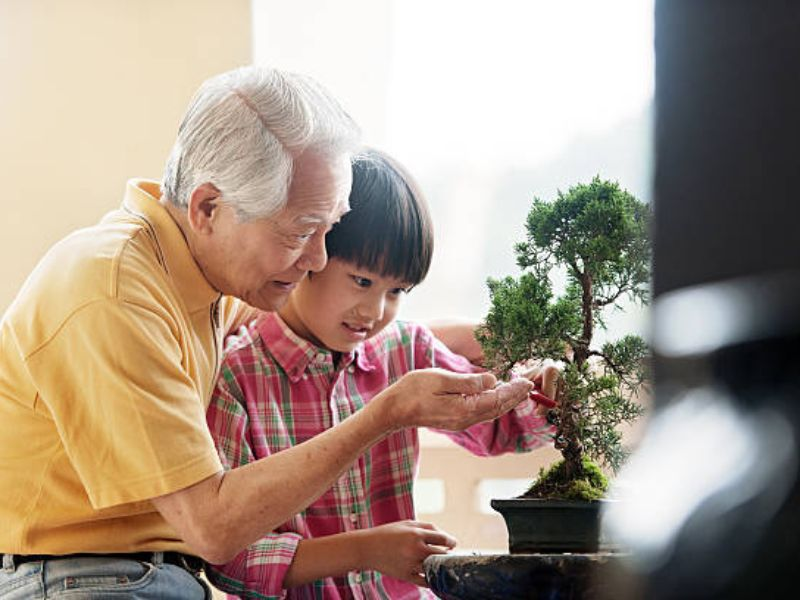Selecting the best bonsai soil is a critical step in the cultivation of these miniature masterpieces, setting the foundation for a thriving bonsai.
The soil is not just a medium to hold the roots; it’s a vital resource that affects water retention, nutrient uptake, and root aeration—key factors that contribute to the overall health and growth of a bonsai tree.
Whether you are an experienced bonsai artist or a beginner enthralled by the art, understanding that the right soil can make a significant difference is essential. It’s the balance of properties within the soil that supports the delicate life of a bonsai, allowing it to withstand the constraints of a pot while continuing to grow in harmony with its miniature form.
Understanding Bonsai Soil
Bonsai soil is fundamentally different from your typical garden or potting soil. Its unique characteristics are tailored to support the specific needs of bonsai trees, which are confined to small containers.
Selecting the best bonsai soil is essential as it must drain quickly yet retain adequate moisture to maintain healthy and oxygenated roots, a requirement not typically met by garden soil. The suitability of bonsai soil hinges on a combination of physical and chemical properties that cater to the intricate balance required for the health of these miniature trees.
Physically, the ideal bonsai soil mixture has a granular structure to prevent compaction, which could suffocate the roots. This is crucial as compacted soil can lead to waterlogging and root rot—a death sentence for the delicate bonsai. Moreover, the granular texture ensures that the soil will hold its structure when wet, allowing for better airflow and root penetration.
Chemically, bonsai soils are typically neutral to slightly acidic, which aligns with the pH preferences of most bonsai tree species. The soil must also have an optimal balance of nutrients, with a good cation-exchange capacity to retain and supply the roots with the necessary minerals.
It’s this meticulous balance of drainage, aeration, and nutrition that makes selecting the right bonsai soil mix a pivotal decision for any bonsai enthusiast.
The Role Of Soil Components In Bonsai Health
The health of a bonsai tree is intricately tied to the components of its soil. Each element, from inorganic materials to organic matter, plays a distinct role in fostering a conducive environment for growth.
Inorganic materials such as akadama, pumice, and lava rock are commonly found in bonsai soil mixtures due to their excellent drainage capabilities. They allow excess water to escape swiftly, preventing the dreaded root rot that so often plagues poorly drained soils.

Akadama, a type of clay unique to Japan, is particularly valued for its water retention and nutrient-holding properties. When wet, it retains water and nutrients, releasing them gradually to the roots. As it dries, it provides much-needed aeration to the root system.
Pumice contributes to the mix by promoting aeration and moisture regulation, while lava rock adds structure and drainage, with its porous nature also holding moisture and nutrients.
Organic matter, such as peat moss or pine bark, is also integrated into bonsai soil mixes. Peat moss, known for its capacity to retain water, can help in maintaining moisture in the soil. However, it must be used judiciously to avoid waterlogging. Pine bark not only aids in moisture retention but also gradually decomposes to release nutrients over time.
The careful balance of these components creates a soil mix that supports the bonsai’s health by ensuring adequate drainage, preventing waterlogging, and maintaining a consistent supply of moisture and nutrients. The right mix tailored to a specific bonsai species can enhance the tree’s vigor and resilience, enabling it to thrive even within the confines of a small pot.
Types Of Bonsai Soil Mixes
Bonsai enthusiasts often encounter a diverse array of soil mixes, each formulated to cater to the nuanced needs of different bonsai tree species.
The key to successful bonsai cultivation lies in understanding that not all bonsai trees are alike; each species comes with its own set of requirements for optimal growth. For instance, a juniper may thrive in a soil mix that is well-draining and lean, while a tropical species like ficus may prefer a mix with a higher organic content for moisture retention.
Organic soils
Organic soil mixes, revered for their moisture and nutrient retention due to components such as pine bark, peat moss, and decomposed organic matter, benefit species that thrive in humidity or require abundant nutrients. However, to prevent soil compaction and ensure proper drainage, it’s crucial to balance organic matter with inorganic components.
Inorganic Soils
Soil mixes primarily made up of pumice, lava rock, and akadama are preferred for their exceptional drainage capabilities. These qualities make them suitable for species prone to root rot or those that prefer a drier root environment. Inorganic components can prevent overwatering by allowing excess moisture to drain away quickly, while still maintaining adequate water retention due to their porous nature.
Customizing Your Soil Mix

Crafting the best bonsai soil mix is similar to tailoring a bespoke suit; it must be custom-fitted to meet the specific requirements of your bonsai tree.
The journey begins with understanding the specific needs of your tree species—considering factors like water, nutrient requirements, and tolerance to wetness or dryness. For instance, a desert-dwelling species will have vastly different needs from a tree that thrives in a tropical climate.
To avoid the pitfalls of compacted organic soil, which can suffocate roots and impede water flow, a bonsai enthusiast must balance organic components with inorganic ones. A common approach is to start with a base of inorganic substrates like pumice, lava rock, or calcined clay, which provide excellent drainage and aeration.
Then, depending on your bonsai’s needs, you can add organic materials such as pine bark or composted pine needles to improve water retention and provide a slow release of nutrients.
The key is in the proportions; too much organic material can lead to water retention and potential root rot, while too little may dry out quickly and require frequent watering. Fine-tuning these ratios will create a mix that allows the roots to breathe and access moisture consistently without the risk of waterlogging.
It’s crucial to consider the particle size of bonsai soil; smaller particles suit miniature bonsai, like shohin or mame, while larger particles are better for bigger bonsai with more substantial root systems.
Choosing Soil For Different Bonsai Species
Bonsai, an art form that replicates natural tree conditions in miniature, requires particular soil types to mimic these environments. Deciduous trees, which lose their foliage in fall, need a soil mix that retains moisture yet drains well. A blend rich in organic materials like pine bark or leaf mold is ideal, providing both water retention and essential nutrients during their growth phase.
For deciduous bonsai, a balanced mix typically includes equal parts akadama, pumice, and organic matter. This combination ensures the soil remains moist without becoming waterlogged, facilitating proper root hydration and health.
In contrast, evergreen bonsai, such as pines and junipers, demand a mix that offers superior drainage. These species, accustomed to quick-draining habitats, are prone to root rot if their soil remains damp. A mix with a higher proportion of akadama and lava rock, complemented by a smaller quantity of organic matter, provides the right dryness level between waterings.
Tropical bonsai varieties, like Ficus, prefer even more organic content to sustain the higher humidity they thrive in. A mix for these might include one part akadama, one part pumice, and two parts organic matter, such as peat moss or coconut coir, to maintain the moist environment they require.
It’s crucial to remember these are merely initial recommendations. Each bonsai’s unique characteristics and the local climate must guide soil mix adjustments. Starting with these guidelines, monitor your bonsai’s response, and tweak the soil mix as necessary. The ultimate goal is a thriving bonsai, flourishing in a soil environment tailored to its specific needs.
DIY Vs. Pre-Mixed Bonsai Soils
When it comes to bonsai soil, the debate between DIY and pre-mixed options is as much about personal preference as it is about the specific needs of your bonsai. DIY soil mixes offer the advantage of customization; you can tweak the proportions of each component to create a blend perfectly suited to your tree’s requirements.
This can be especially important for those cultivating rare or finicky species, or for those in unique climates where off-the-shelf mixes may not suffice.
Creating your own perfect bonsai soil mix at home is straightforward. Start with a base of inorganic components for drainage—akadama, pumice, and lava rock are popular choices. Then, depending on your tree’s needs, incorporate organic materials like pine bark or sphagnum moss to retain moisture. A balanced mix might look like this: 50% akadama, 25% pumice, and 25% organic material. Adjust the ratios based on your tree’s watering needs and the local climate.
The advantages of DIY mixes include freshness and the ability to make small batches tailored to individual trees. However, the downsides include the time and research required to source and combine the materials correctly. Additionally, without the proper knowledge, you risk creating a mix that doesn’t provide the right balance for your bonsai.
Experts often create pre-mixed bonsai soils to offer convenience and consistency, and they design these mixes to cater to a wide range of general bonsai needs. They’re a great starting point for beginners or those looking for a hassle-free option. The downside is that they may not be ideal for every tree or situation, and they can be more expensive than homemade mixes over time.
Grow With Us: Bonsai Mastery

The quest for the best bonsai soil mix is both an art and a science, one that requires patience, knowledge, and a willingness to adapt. Remember, the soil is the foundation of your bonsai’s health, and mastering it is a crucial step in your bonsai journey.
We invite you to take this knowledge, explore and experiment with different soil mixes, and observe the impact on your bonsai’s growth and vigor. Your personal experience is invaluable; sharing it can help the bonsai community grow stronger together. Don’t hesitate to ask questions, seek advice, and connect with fellow enthusiasts.
At Leaves and Soul, we’re committed to supporting your passion for bonsai. We offer a range of soils, fertilizers, and amendments tailored to meet the needs of every bonsai gardener. Whether you’re just starting out or looking to refine your practice, we have the resources to support your growth.
So, step forward, apply what you’ve learned, and engage with the community. Your feedback and experiences not only contribute to your own bonsai success but also help others along their path. Together, let’s cultivate more than just bonsai—let’s cultivate a community of shared knowledge and passion.





0 Comments